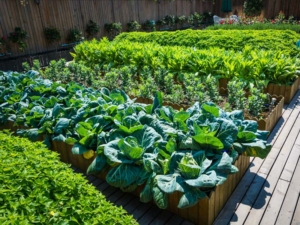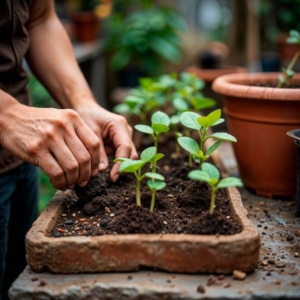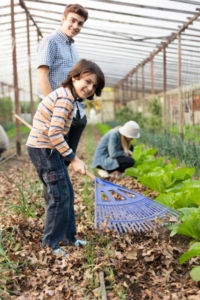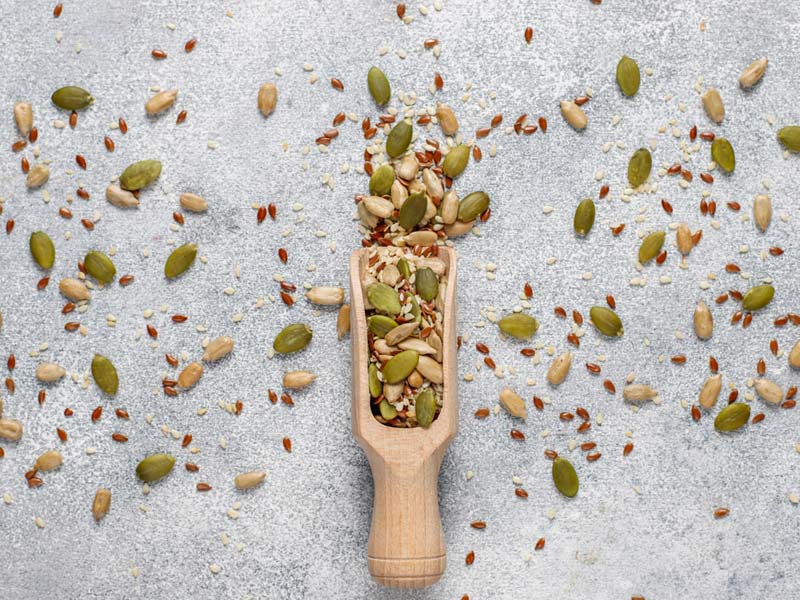From Seed to Supper: Growing a Year-Round Vegetable Garden in the South
Let’s be honest, if you live in the South, you’ve probably already heard someone brag about how they pick tomatoes well into December or harvest collards before a single frost has even shown its face. And guess what? They’re not lying. Gardening in the South is an absolute dream when it comes to growing vegetables all year long. With the right mix of know-how, timing, and just a bit of sweat equity, you can turn your backyard or, heck, even your patio into a never-ending food supply. Imagine biting into your own fresh cucumbers in July, roasting sweet potatoes from your garden in November, or making a winter soup using kale you just picked that morning. It’s more than possible. It’s a lifestyle. Let’s walk through exactly how to grow a thriving, year-round vegetable garden in the South, from seed to supper.
First Things First: Know Your Zone
Before you even touch a seed packet or a bag of soil, you need to know your USDA Hardiness Zone. Most of the Southern U.S. falls between zones 7 and 10, which means you’ve got a longer growing season than most places in the country. In fact, in many parts of the South, there’s not even a “real” winter, just a few cold snaps here and there. That’s great news for gardeners, because it opens up the possibility of planting not once, not twice, but three or even four times a year. Once you understand your zone, it becomes much easier to determine what you can grow and when.
Pick the Right Spot for Your Garden
Okay, now that you know your zone, it’s time to find your garden’s home. Location really matters. Your vegetables will need at least 6–8 hours of direct sunlight every day to thrive. So take a good look around your yard, watch how the sun moves across it during the day. Morning sun is gold for most veggies, and afternoon shade can actually help in the hotter months. Also, check your drainage. If water tends to pool in certain areas after a rain, avoid planting there unless you want to create a swamp garden. Elevated beds or containers can help solve this issue if your ground is too soggy.
Southern Soil: It Needs Some Love
Here’s the truth: Southern soil isn’t always great straight out of the ground. It can be sandy, clay-heavy, or just plain tired from overuse. But don’t worry. That doesn’t mean you can’t work with it. Start by doing a simple soil test. You can get a kit online or take a sample to your local extension office. Once you know what your soil is missing (or has too much of), you can start adding organic matter like compost, leaf mulch, or well-aged manure. Over time, this transforms your dirt into rich, crumbly soil that vegetables just love.
 Raised Beds vs. In-Ground Gardening
Raised Beds vs. In-Ground Gardening
This choice is personal, and both options can be incredibly productive. Raised beds warm up faster in spring, drain well, and let you control the soil quality more easily. They’re also a back-saver if bending over is a chore. On the other hand, in-ground gardens can hold more moisture (which is handy in a hot Southern summer) and allow roots to grow deeper. If you’re just starting out, consider beginning with one or two raised beds, say, 4×8 feet, and expand as you get more comfortable.
Planning the Garden Calendar: It’s All About Timing
Here’s where the year-round magic really kicks in. In the South, you don’t have just one planting season; you’ve got several. Think of your garden as a rotating stage where different crops make their grand entrance throughout the year.
- Spring (March–May): Time to go big with leafy greens, carrots, beets, radishes, and onions. As the soil warms, start tomatoes, peppers, cucumbers, and beans.
- Summer (June–August): Okra, sweet potatoes, southern peas (like black-eyed peas), and eggplant thrive. Water deeply and mulch heavily to beat the heat.
- Fall (September–November): As things cool off a bit, bring back lettuce, kale, broccoli, cauliflower, turnips, and more radishes.
- Winter (December–February): If your zone allows it, hardy greens like collards, mustard greens, spinach, and some types of garlic can grow through the colder months.
Succession planting is a game-changer here. That just means planting new crops as soon as a spot opens up. You harvest the spring spinach, then pop in some summer beans. Once the beans are done, the fall broccoli. It keeps things rolling all year.
 Start from Seed or Buy Transplants?
Start from Seed or Buy Transplants?
If you’re just dipping your toes into gardening, transplants can be a gentle start. You can grab them from a nursery or even a local farmer’s market. But if you really want variety, save money, and feel like an absolute plant wizard, starting your vegetables from seed is the way to go. Just be sure to read the seed packets carefully. They’ll tell you when to plant and whether the seeds should be started indoors or sown directly in the soil.
For Southern gardens, you can start warm-weather seeds like tomatoes and peppers indoors as early as January or February, especially in zones 8–10. Come March or April, you’ll be ready to transplant them outside.
Managing the Southern Heat
Let’s not sugarcoat it, Southern summers can be brutal. Your veggies feel it, too. That’s why mulching is your best friend. It keeps the soil cooler, conserves water, and stops weeds in their tracks. Use straw, leaves, pine needles, or even grass clippings. Shade cloths can also protect delicate crops like lettuce from bolting (which means going to seed too early) when the temperatures climb.
Make sure you water early in the morning, preferably at the base of your plants. Watering at night can lead to mildew and fungus, especially when it stays humid overnight.
Pests and Diseases: The Southern Edition
With all this warm weather, it’s not just your plants that thrive; pests do too. From aphids to squash bugs to tomato hornworms, you’ll meet your fair share of uninvited garden guests. The key is to stay on top of it. Walk your garden daily if you can, checking for holes in leaves or weird discoloration. Sometimes, a blast of water or a homemade soap spray can knock pests off. Other times, you might need to call in reinforcements like ladybugs, neem oil, or insecticidal soap.
Rotate your crops to avoid soil-borne diseases, and try companion planting. For example, planting basil near tomatoes not only tastes great later but also helps keep tomato hornworms away.
Add Some Perennials to the Mix
Don’t forget, not every edible plant has to be replanted every season. Southern gardens are perfect for some perennial vegetables and herbs. Asparagus, rosemary, oregano, chives, and even artichokes can be planted once and harvested for years to come. Imagine having a few trusty plants that come back again and again, like old friends.
Don’t Skip the Fun Stuff
Yes, growing your own food is practical, healthy, and rewarding, but it should also be fun. Mix in some unexpected veggies or heirloom varieties that you can’t get at the store. Grow a crazy purple carrot or striped tomato just for the surprise. Make space for herbs, edible flowers like nasturtiums or calendula, and maybe even a quirky crop you’ve never tried before, like ground cherries or yardlong beans.
You can even turn it into a whole experience. Host a harvest dinner. Share the bounty with your neighbors. Roast up some freshly picked corn and pass around a bowl of Farmer Jon’s popcorn while you chat about what you’ll grow next season.
Extend the Harvest with a Little Protection
Even in the South, winter can sneak up and nip at your crops. But you can stay one step ahead by using row covers, cold frames, or even mini hoop houses. These simple structures can keep frost-sensitive crops going strong through December and beyond. Some gardeners even build full greenhouse setups or use old windows to create DIY cold frames. It doesn’t have to be fancy, just effective.
Composting: Feed the Soil, Feed the Plants
Healthy soil equals healthy plants. And the easiest way to keep your soil rich is by composting. Toss in kitchen scraps like fruit and veggie peels, coffee grounds, eggshells, and garden trimmings. In no time, you’ll have black gold that your plants will absolutely love. Just remember to keep a good balance between “greens” (wet, nitrogen-rich material) and “browns” (dry, carbon-rich stuff like leaves or cardboard). Turn your compost pile every week or two, and it’ll break down faster than you think.
Keep a Garden Journal (Seriously, Do It)
You don’t have to be a diary person, but a garden journal is worth the effort. Jot down what you plant, when you plant it, how it does, and what you’d do differently. Over time, this becomes your personalized growing guide. You’ll know when to start seeds, which varieties thrived, and which ones flopped. You can even note when pests showed up and what you used to stop them. It’s one of those habits that pays off big time in the long run.
 Get the Whole Family Involved
Get the Whole Family Involved
Gardening isn’t just for adults. Kids love digging in the dirt, watching plants grow, and tasting something they helped create. Let them pick out a few seeds to grow themselves. Maybe it’s a pumpkin patch for Halloween or sunflowers that tower over them by July. Give them a tiny space and watch how proud they get. It turns into a bonding experience and teaches them where food really comes from.
Final Thoughts (But Not the End)
Here’s the deal: gardening in the South isn’t just a seasonal hobby; it can be a year-round adventure if you want it to be. It connects you to your food in a way that shopping at the grocery store never will. It grounds you, quite literally. You learn patience, pay attention to nature, and gain a real sense of accomplishment every time you harvest your own dinner.
Whether you’re growing on a balcony or in a backyard the size of a football field, you’ve got everything you need to get started, and now’s as good a time as any. All it takes is that first seed, a bit of sunshine, and the belief that you can grow something amazing.



